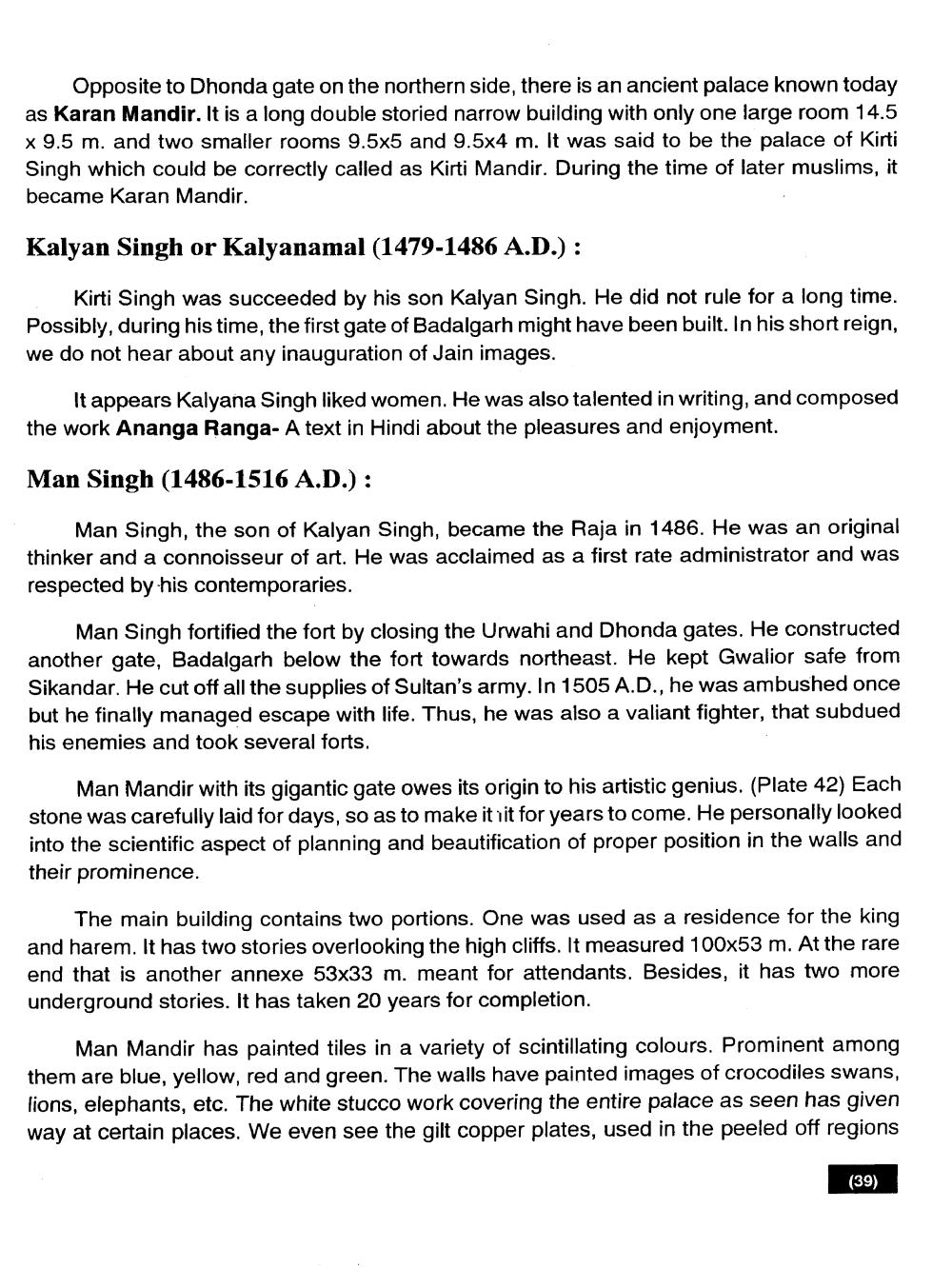________________
Opposite to Dhonda gate on the northern side, there is an ancient palace known today as Karan Mandir. It is a long double storied narrow building with only one large room 14.5 x 9.5 m. and two smaller rooms 9.5x5 and 9.5x4 m. It was said to be the palace of Kirti Singh which could be correctly called as Kirti Mandir. During the time of later muslims, it became Karan Mandir.
Kalyan Singh or Kalyanamal (1479-1486 A.D.) :
Kirti Singh was succeeded by his son Kalyan Singh. He did not rule for a long time. Possibly, during his time, the first gate of Badalgarh might have been built. In his short reign, we do not hear about any inauguration of Jain images.
It appears Kalyana Singh liked women. He was also talented in writing, and composed the work Ananga Ranga- A text in Hindi about the pleasures and enjoyment.
Man Singh (1486-1516 A.D.):
Man Singh, the son of Kalyan Singh, became the Raja in 1486. He was an original thinker and a connoisseur of art. He was acclaimed as a first rate administrator and was respected by his contemporaries.
Man Singh fortified the fort by closing the Urwahi and Dhonda gates. He constructed another gate, Badalgarh below the fort towards northeast. He kept Gwalior safe from Sikandar. He cut off all the supplies of Sultan's army. In 1505 A.D., he was ambushed once but he finally managed escape with life. Thus, he was also a valiant fighter, that subdued his enemies and took several forts.
Man Mandir with its gigantic gate owes its origin to his artistic genius. (Plate 42) Each stone was carefully laid for days, so as to make it it for years to come. He personally looked into the scientific aspect of planning and beautification of proper position in the walls and their prominence.
The main building contains two portions. One was used as a residence for the king and harem. It has two stories overlooking the high cliffs. It measured 100x53 m. At the rare end that is another annexe 53x33 m. meant for attendants. Besides, it has two more underground stories. It has taken 20 years for completion.
Man Mandir has painted tiles in a variety of scintillating colours. Prominent among them are blue, yellow, red and green. The walls have painted images of crocodiles swans, lions, elephants, etc. The white stucco work covering the entire palace as seen has given way at certain places. We even see the gilt copper plates, used in the peeled off regions
(39)




